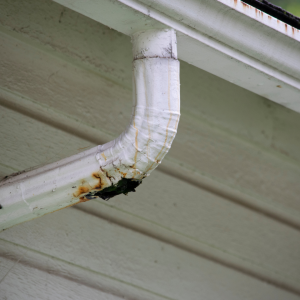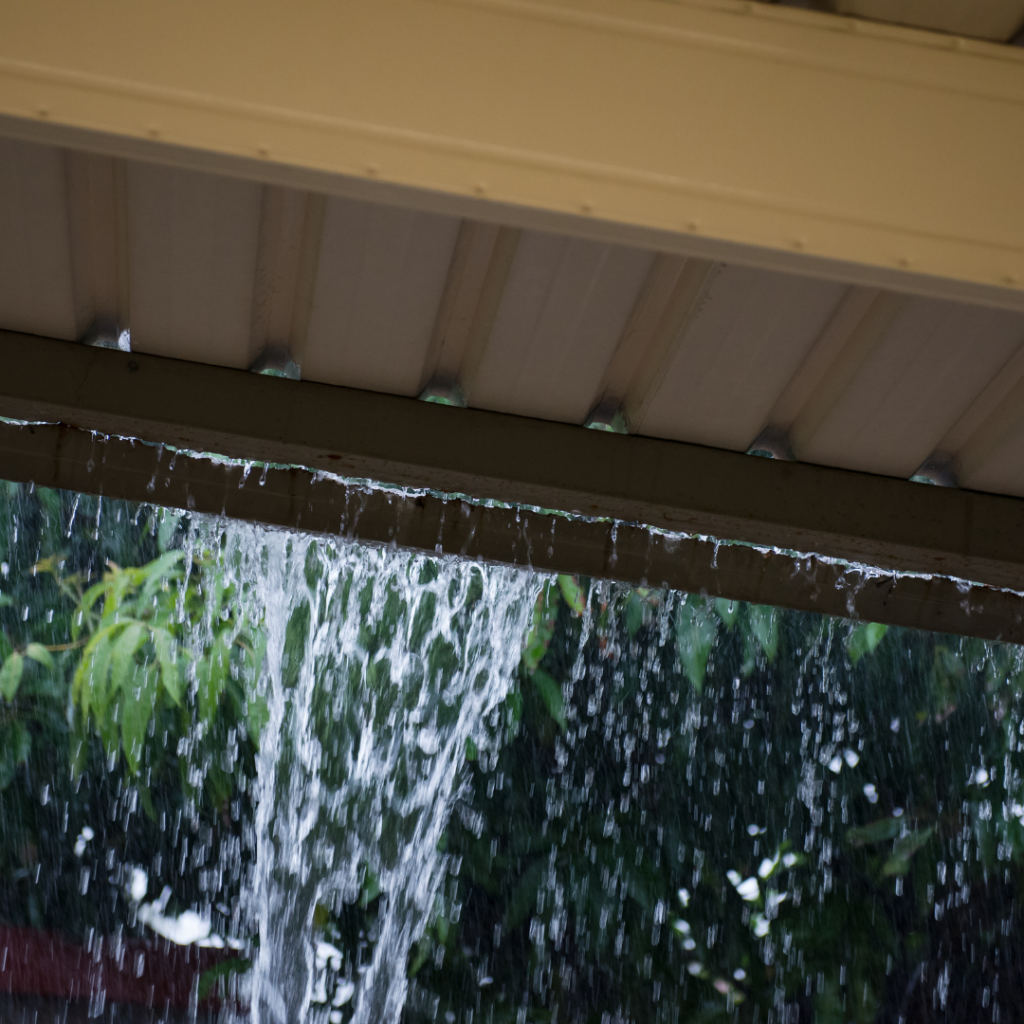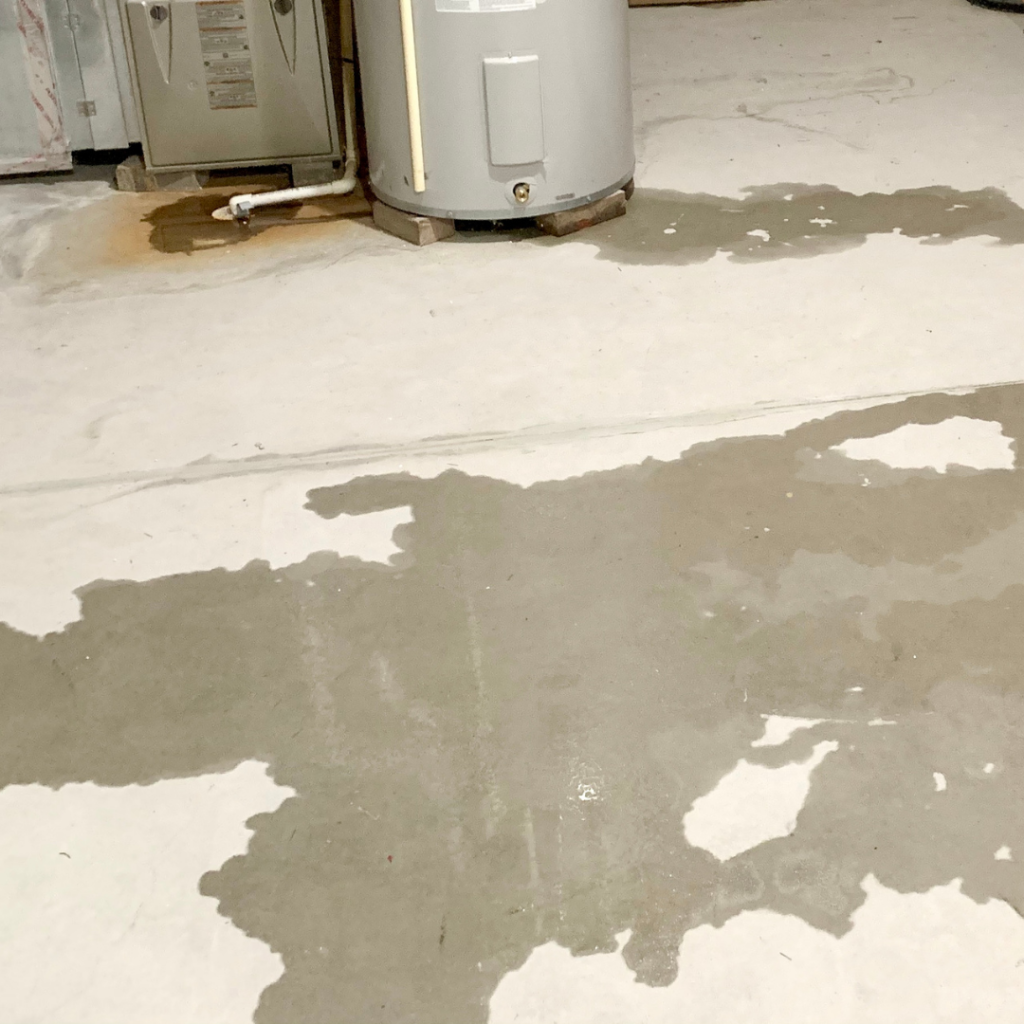
Signs of a Serious Drainage Problem
Signs of a Serious Drainage Problem
You don’t need to be a geophysicist to recognize that puddles in the basement or a lake in the front yard indicate drainage problems.
However, many drainage problems are not so visible. Here’s how the professionals discover some of the more subtle indicators of poor drainage, and why you’ll save money if you address these issues now rather than later.

Gutters That Are Overflowing
A mini-Niagara Falls over the edge of your gutter indicates that dead leaves and debris are obstructing the flow. But you don’t need a live gusher to know you’re in trouble: Other telltale indicators include vertical streaks of dirt on the exterior of gutters, mud spattered on siding, and paint flaking off the home in vertical stripes. Overflowing gutters may destroy siding, ruin paint jobs, and cause structural damage if you do nothing.
Downspouts That Dump
Each inch of rain that falls on 1,000 square feet of roof creates more than 600 gallons of overflow, which is enough to fill 10 bathtubs to the brim. Dumping that much water too near to the foundation will send it directly into the basement, destroying furnishings, floors, and everything else that you put in your basement.
Water Stains in the Basement

Water from your house or yard has leaked if you find traces of water on your home’s foundation. The presence of water marks on the foundation wall indicates that the drainage issue began outside your home. Check your rain gutters for blockages or your soil for standing water to determine the source of these problems.
However, if you find a continuous line of water stains in your basement, you may be dealing with something more serious. You could live in a location where the water table changes, causing water to leak into your property. Alternatively, if your property was built below the water table line, city storm drains may back up into your home.
Clear your basement of all valuables and invest in a sump pump to keep your drainage under control to fix any of these problems and prevent damage to your things.
Cracks in the Foundation
Small cracks in foundations are common when houses settle over time. Most are safe, but larger cracks should be monitored. Mark the ends of cracks greater than 1/8-inch wide with an erasable pencil line to keep an eye on them. Take a measurement of the breadth and make a note of it. If you observe the cracks expanding, you may have a problem.
Unpleasant Smell
If your drains are creating foul odors, they may need to be repaired. This typically indicates that the waste isn’t being collected and disposed of safely. Sewer gasses are forced up through the p-traps in the sinks, resulting in a strong and unpleasant odor.
Lawn Problems
Your grass may have flooded or gotten soggy, which is one of the problems you may see outside. Plants can also grow where they weren’t before along the sewage pipe. These yard problems indicate that your drains aren’t working properly. While it’s common for your lawn to be a little damp after it’s rained, you don’t want it to be too moist. Not only is it bad for your grass, but it might also indicate that your property has major issues.
You Have Mold in Your Attic
If your gutters are clogged with water, the fascia boards next to them will deteriorate over time. Although rot can spread to the rest of your roof, the first indicator of a gutter-related moisture problem you’ll see from the interior of your attic is in your insulation. Moldy, wet insulation is a sure sign that your rain gutters aren’t doing their job.
- Protecting Your Property: Why the Right Cleaning Method Makes All the Difference
- The #1 Thing That’s Dulling Your Curb Appeal (And How to Fix It)
- How Maintenance Bundles Provide Peace of Mind for Busy Small Business Owners and Facility Managers
- Essential vs. Complete Home Packages: Choosing the Right Preventive Care for Your Property
- How a Simplified Service Model Benefits Both Homeowners and Franchisees Alike


